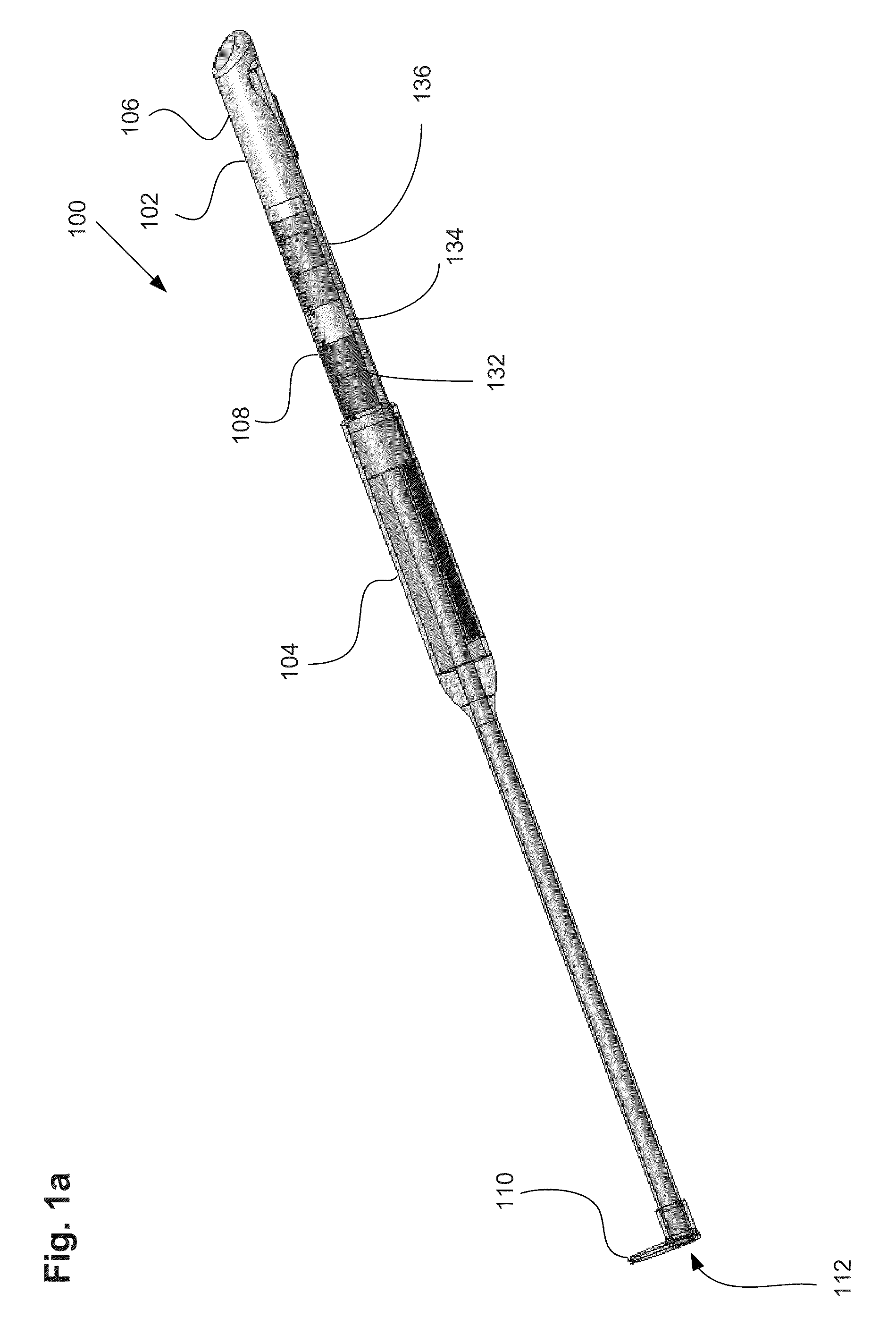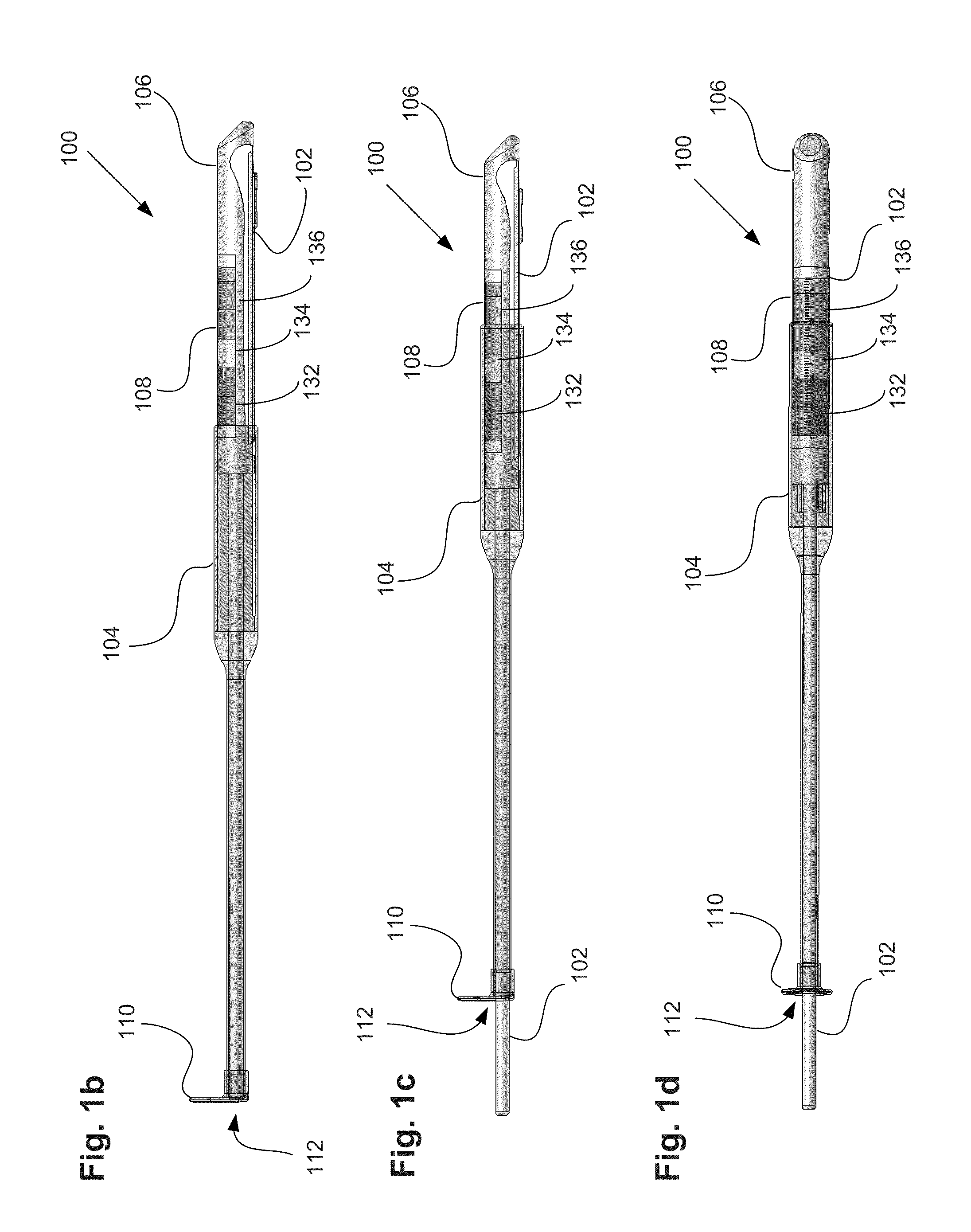Devices and methods for cervix measurement
a technology of cervix and measurement method, applied in the field of medical devices, can solve the problems of significant variation between practitioners, incompetent cervix, cervical incompetence, etc., and achieve the effect of easing labor
- Summary
- Abstract
- Description
- Claims
- Application Information
AI Technical Summary
Benefits of technology
Problems solved by technology
Method used
Image
Examples
Embodiment Construction
[0034]The present invention provides various devices and methods for determining dimensions of female reproductive organs. For example, the devices described herein are particularly adapted for determining the length of the cervix in the formix vaginae, which, as described above, is related to the risk of preterm labor in an individual. The devices can also be suited for determining the dilation of the cervix uteri, for predicting the risk of preterm labor or the particular stage of delivery.
[0035]It is, however, contemplated herein, that the invention is not limited to determining various dimensions of female reproductive organs. For example, the invention can be usable for determining the dimension of any body cavity or passageway where such a device would be insertable, such as a vagina, uterus, mouth, throat, nasal cavity, ear channel, rectum, and also to any cavity created and opened by surgery, for example, during chest, abdominal or brain surgery.
[0036]The devices described h...
PUM
 Login to View More
Login to View More Abstract
Description
Claims
Application Information
 Login to View More
Login to View More - R&D
- Intellectual Property
- Life Sciences
- Materials
- Tech Scout
- Unparalleled Data Quality
- Higher Quality Content
- 60% Fewer Hallucinations
Browse by: Latest US Patents, China's latest patents, Technical Efficacy Thesaurus, Application Domain, Technology Topic, Popular Technical Reports.
© 2025 PatSnap. All rights reserved.Legal|Privacy policy|Modern Slavery Act Transparency Statement|Sitemap|About US| Contact US: help@patsnap.com



